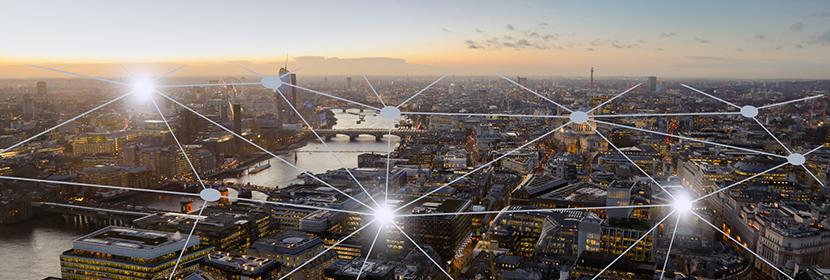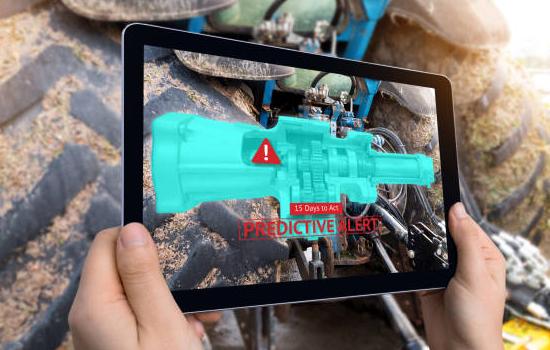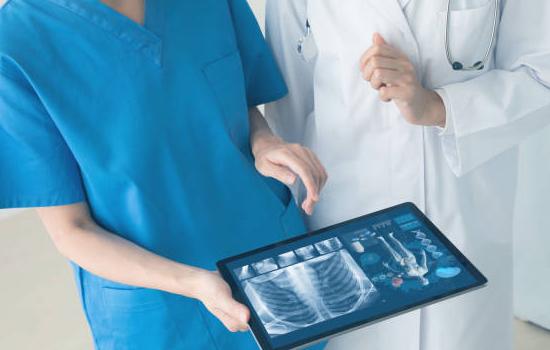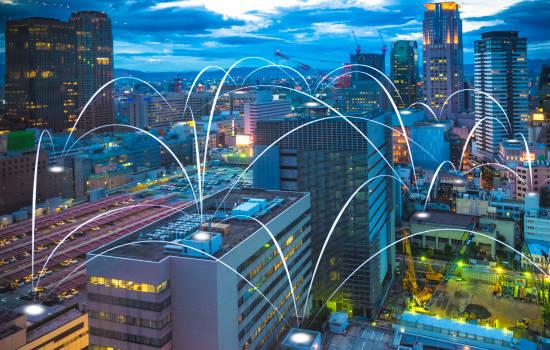5 Best Use Cases of Internet of Things

Nothing brings together the defining elements of this technological era-connectivity, devices, and data-like the Internet of Things. Put simply, the IoT is a system which connects a vast number of well, things; from simple sensors and consumer wearables, to IoT applications and industrial machines. All of these can be connected through the web to share data and ‘communicate’ with each other.
One of the simplest and best-known applications of IoT is a smart home, in which internet-enabled appliances such as security, lighting, and heating systems can be controlled remotely. While not everybody needs home automation, and some IoT devices should not have seen the light of day (think connected mirrors and smart salt shakers), it cannot be denied that in the more sensible use cases, the Internet of Things does improve how people work and live.
As the world becomes increasingly connected, companies across various industries are harnessing IoT to better understand and respond to customer needs, streamline operations, increase efficiency, cut down on waste, and generally find more innovative ways to do things.
In this post, we delve into the 5 top use cases of IoT initiatives, utilised by enterprises in their operations and workplaces.
Retail industry

The integration of IoT technology into the retail industry is expected to generate a whopping $35 billion by 2020. IoT is used in many aspects of retail operations, and one area where it has made a significant impact is in enhancing customer satisfaction. Color-coded buttons and/or IoT sensors enable clients to give immediate feedback on their shopping experience, thus allowing stores to evaluate their systems and services.
Retailers are also making significant use of IoT sensors that keep track of goods and materials throughout the entire supply chain. Data from the tracking systems enable them to check location, temperature, humidity, shock, etc., while also helping them monitor if goods were delivered safely and on schedule. These factors go a long way to determining the efficiency of transport logistics, reducing product damage, and preventing loss.
Predictive maintenance

Predictive maintenance is another compelling use case for the Internet of Things. IoT is proving to be very valuable to any company or facility that is highly dependent on hardware such as manufacturing equipment, power machinery, and transportation, because maintenance is a key cost factor in these businesses. Predictive maintenance is therefore critical in downtime prevention, and in contributing to overall time and cost savings.
IoT data collected from embedded computer chips and sensors allows companies to determine a machine’s probability of failure, even before that failure takes place. This makes it easier for them to identify when equipment will need maintenance and to conduct maintenance at the right time. The bottom line is that predictive maintenance using IoT improves both production and maintenance efficiency.
Patient care and monitoring

In the healthcare sector, IoT is also creating a significant impact by reducing costs and even saving lives. Using IoT-driven software that tracks occupancy, hospitals are slashing wait times in emergency rooms and fast-tracking admission of patients. Other solutions guarantee the availability and accessibility of critical medical hardware at all times by constantly monitoring these devices for any problems such as power outages or system failures.
IoT value in healthcare is not limited to usage in hospitals and clinics; it also helps greatly in remote patient care. IoT solutions are able to track patients’ vitals remotely and ensure the patients are taking the right medicines at the right time. Healthcare workers can also be notified of falls, accidents, and other critical health problems, so that responders can get to these patients immediately and offer the proper treatment.
Fleet management

IoT-assisted logistics in fleet management are helping fleet companies run their operations more efficiently. When equipped with the right sensors, delivery trucks, passenger cars, or any other vehicle types can be tracked in real-time and can transmit valuable data critical to the vehicle’s routes, repair, maintenance, and other standard procedures.
Fleet operators that have integrated IoT initiatives into the management of their vehicles have seen numerous benefits, including higher fuel efficiency, timely preventive maintenance, enhanced engine performance, and smarter routing decisions. In turn, these improvements will also create a positive impact to the greater community such as ensuring the quality of delivered food, recommending the improvement of roads and elimination of potholes, and increasing productivity of delivery personnel.
Smart cities

Highly-urbanised cities have turned to IoT technology to address some of the problems that are inherent in areas with rapidly increasing populations, such as traffic congestion, environmental deterioration, sanitation concerns, and proliferation of urban crimes. Across the globe, smart cities are utilising a number of IoT applications that have helped create healthier, safer, and more organised communities.
For instance, road-surface sensors deployed in strategic locations are helping to monitor vehicle movement and to automatically adjust green light timings to improve traffic flow and prevent potential congestion. Connected lighting solutions are also being used to control street lamps so that they can react to existing conditions, making lighting more efficient and cost-effective.
The general use cases cited above are only a few of the real-life applications of IoT technology. As the capability for connectivity increases-faster internet speeds, more smart devices, so will the deployment of IoT initiatives. Partnering with the right IoT and cloud vendor will put your organisation on the right track to leveraging the potential of the Internet of Things.
Related Posts
By accepting you will be accessing a service provided by a third-party external to https://www.htl.london/